Students’ choice of selecting a university abroad depends heavily on employability opportunities. Every year “The Times Higher Education” releases ranking lists for universities around the world. The ranking is based on 13 performance indicators that measure the institution’s performance across teaching, research, knowledge transfer, and international outlook.
The list is prepared after compiling answers of several recruiters, chief executives and business managers from top companies in 20 countries.
Let us have a look at the list “Top 10 Universities in Turkey for Higher Education for the year 2020”
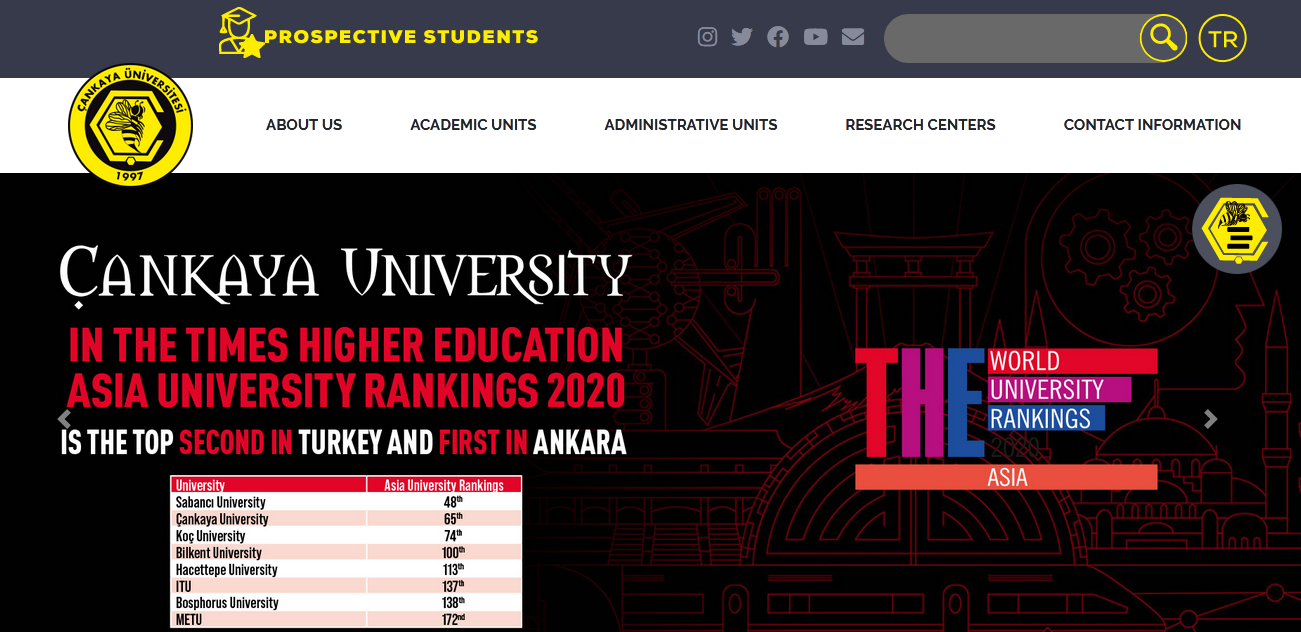
Located in Ankara, the capital city of Turkey, Cankaya University is an institution that was first established in July 1997.
The university is owned and run by a private foundation and was first intended as a transition for students of a private secondary school in the city.
In 2011, the university moved onto its current site, known as the new campus, where students can today enjoy a huge range of modern academic and recreational facilities.
These facilities include a dedicated sports centre, allowing students to partake in fitness, table tennis, squash, basketball, volleyball, tennis and handball. As a result of these facilities, the university is able to also provide several sports clubs, as well as sports courses for local schoolkids.
The campus also provides a range of academic facilities including a large modern library and science labs, as well as dedicated buses between Cankaya University and Ankara city centre. In addition to this, Cankaya also plays host to a number of annual festivals and celebrations.
Subjects on offer at the university include law, engineering, architecture and various arts and science-based disciplines.
The university works hard to ensure a welcoming environment for international students, and to foster good relationships with industries and international institutions.
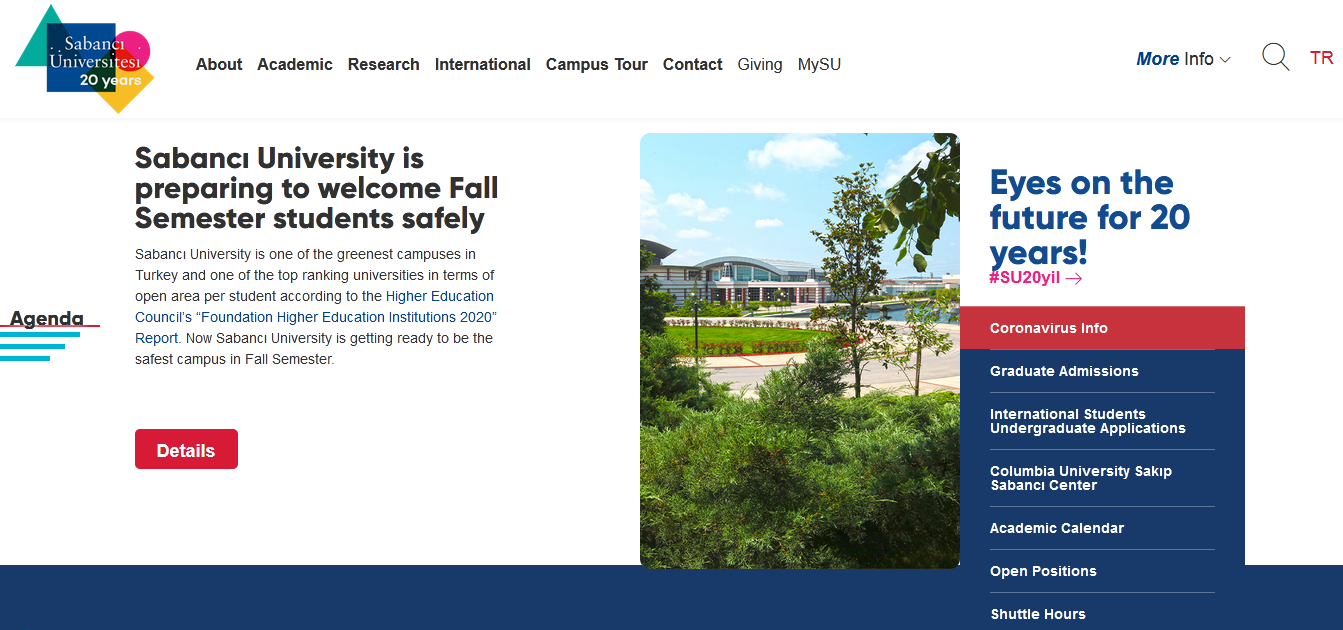
With science, technology, and social structures advancing rapidly, the world needs more qualified individuals who possess the knowledge and skills required to pursue a career anywhere in the world. Aware of this pressing issue, in 1994 the Sabancı Group of Turkey decided to establish a “world university” led by the Sabancı Foundation.
The seeds of Sabancı University, were sown in the summer of 1995, at a search conference in which more than fifty academicians from twenty two countries as well as students and representatives from the private sector participated.
The conference, however, was just the beginning, as it marked the start of an extensive process during which the leading educational institutions in Turkey and across the world were examined to find out how they work and identify the fundamentals that made them successful.
In the end, instead of choosing one university as a template or replicating existing examples and institutions, a new and unique university was designed. Sabancı University’s first students were enrolled in 1999.
Undergraduate and graduate programs at Sabancı University differ in their design and approach from those programs of other universities. The principles that form the foundation of our academic programs and institutional structure are based on an interdisciplinary approach with the absence of traditional departments.
Sabancı University offers undergraduate and graduate programs, as well as minor honor degrees and double degrees under the roofs of three faculties: Faculty of Engineering and Natural Sciences; Faculty of Arts and Social Sciences and Faculty of Management.
The educational system of the University is based on the Common “Foundations Development Year”, which all students must complete regardless of their subsequent program choices. During this year, students develop a foundation of knowledge, critical reasoning and an interdisciplinary approach. In the second phase of Foundations Development, students are free to choose the introductory courses of their preferred diploma program among 13 different options.
When Sabancı University was founded, it was aimed to accommodate an optimal number of 3.500 students. We have currently reached that goal. Approximately 90% of faculty members obtained their PHD’s abroad. The number of faculty members is 368, while the number of students per full time faculty member has remained at 14.
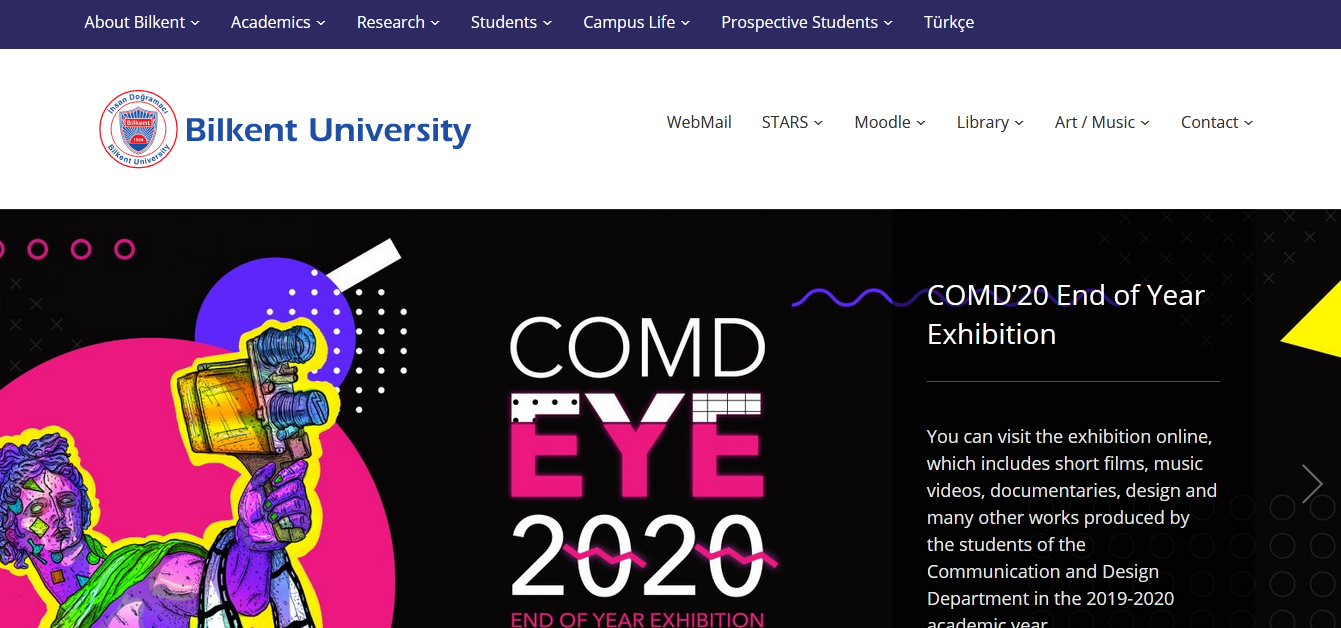
Bilkent University is a non-profit private university in Ankara, Turkey. It was founded in October 1984 and first started to admit students in 1986.
The name “Bilkent” is an acronym of “bilim kenti” which is Turkish for “city of learning and science”.
The university is spread over three campuses approximately 12km from the city centre. It has nine faculties including business administration, education, engineering, humanities and letters, law and science among others. Courses are all taught in English.
The university offers 29 undergraduate majors and 59 graduate programmes. Faculty members come from more than 40 countries around the world.
There are a number of sports clubs at the university that students can get involved with, with training from university staff. The most well known sports teams are the Bilkent Goats (ultimate frisbee) and Bilkent Judges (football).
There are also 100 student clubs that organise regular activities on campus including the underwater sports society, the international relations club, the Quidditch club, the Chess society and the modern dance society among others. There are frequent lectures, art exhibitions, and talks that are held throughout the year that students can attend.
The Student Union is the main organiser of the Mayfest, the university’s annual summer ball. it consists of a number of activities as well as concerts from Turkish pop and rock bands throughout the week.
There are a number of services on campus for students including dining services, health centre, counselling services, disability services, a bookshop, art gallery and Radio Bilkent which is staffed by students and university staff.
Founded in 1967, Hacettepe University is a public institution located in the Turkish capital city of Ankara. It is considered to be among the best medical schools in the country.
The institution is organised across 14 faculties in Communication, Dentistry, Economics and Administrative Science, Education, Engineering, Fine Arts, Health Sciences, Law, Letters, Medicine, Nursing, Pharmacy, Science, and Sport Science.
There are an additional 14 graduate schools and institutes, two applied schools, one conservatory, five vocational schools and 104 research and application centres within the university estate.
Hacettepe has two main campus, one in Ankara’s old town of Ankara, which houses the Medical Centre, and the second in the Beytepe area of the city, with over 1,000 acres of woodland. Other campuses are located in Beşevler, Polatlı and Sincan.
Almost 50,000 students attend the university, which is supported by 3,600 academic staff. Hacettepe offers more than 150 undergraduate degree programmes and over 200 programmes for postgraduates.
The university encourage values of respect, aesthetics, participation and farsightedness among students and staff, as well as a willingness to pave the way for change and development.
The emblem of the university, designed in the 1960s by a second year medical student, is a stag – symbolic of a Hittite deity – which incorporates the letters ‘H’ and ‘T’ for Hacettepe.
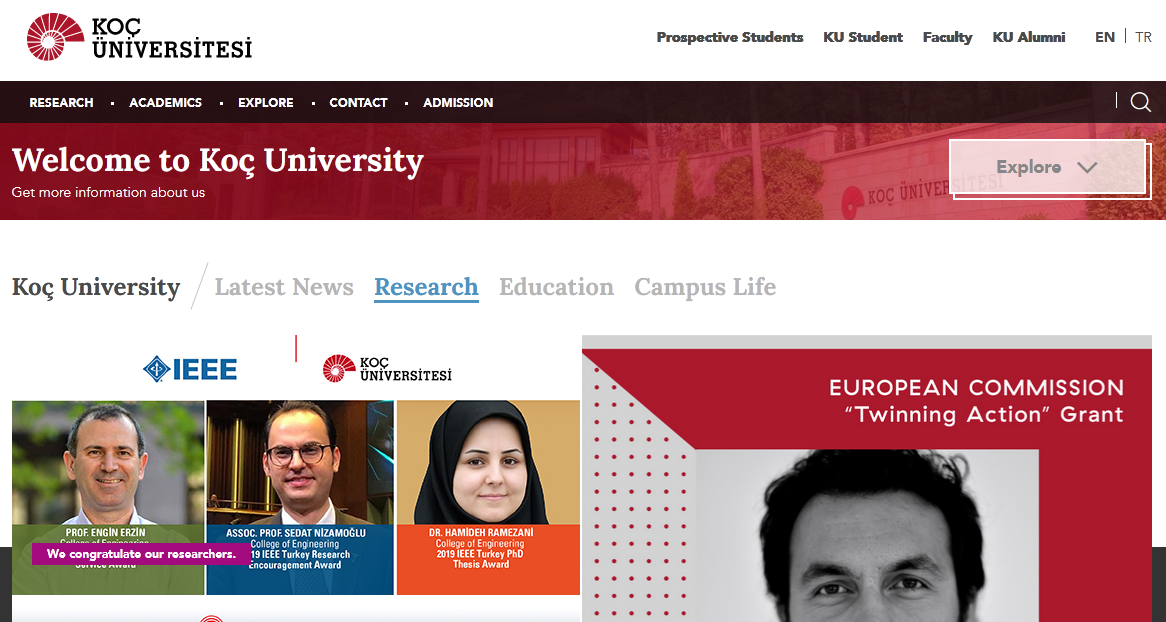
Koç University was founded in 1993 as a non-profit private university in Istanbul, Turkey. In the 22 years since its establishment, Koç University has become one of the leading universities in Turkey, distinguished by notable contributions to education, knowledge and services both domestically and beyond.
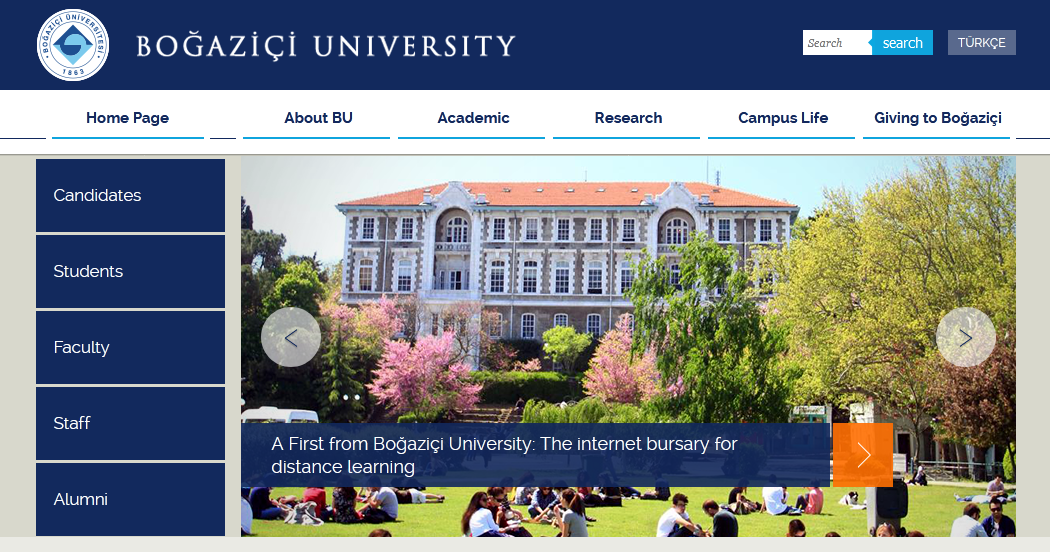
Established as Robert College in 1863, Boğaziçi University (or Bosphorus University) was the first American university founded outside the US. Its founders, wealthy philanthropist Christopher Robert and missionary Cyrus Hamlin, struck up a partnership after meeting during the Crimean War and less than a decade later the university opened its doors to students for the first time, with Dr Hamlin as president.
In 1971 the university was handed over to the Republic of Turkey and took on the name it has today, which comes from the university’s position overlooking the Bosphorus river in Istanbul. There are six university campuses, most of which are located on the European side of the Bosphorus.
The South Campus is home to some of the oldest university buildings as well as a number of faculties. The North Campus, Hisar Campus and Uçaksavar Campus are all located close to the South Campus and are home to some of the university’s newer facilities and departments. On the other side of the river is the Kandilli Observatory on the Kandilli Campus while the newest campus, Saritepe Campus, is near Kilyos on the Black Sea coast, around 34 kilometres from Istanbul.
Today the university boasts six undergraduate faculties and six graduate institutes, divided into a wide variety of departments. It offers a range of sports facilities and the annual Fall Games Tournament and Interfaculty Tournament are big events on the university calendar. Alongside the clubs and societies that cover a range of hobbies and interests, the university organises weekly classical music concerts, bringing world-renowned artists to perform in Boğaziçi University’s Albert Long Hall.
Notable alumni include former prime ministers Tansu Çiller and Ahmet Davutoğlu, the chairman of Turkey’s largest food producer Murat Ülker, and ocean rowing world record holder Erden Eruç.
Istanbul Technical University
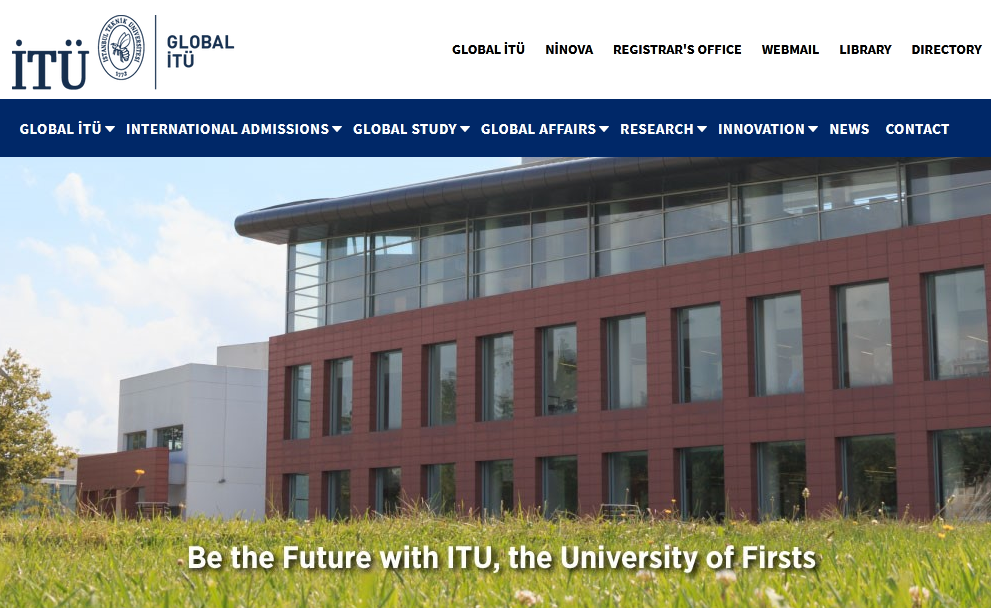
Istanbul Technical University (ITU) was founded in 1773 by Sultan Musafa III as the Imperial School of Naval Engineering, making it the third oldest technical university in the world. Over the years, its functions have widened from the training of military staff to architects in the 19th century and civil engineers in the 20th century. Today, its primary focus is engineering, although it is also known for its social sciences and history.
ITU has 13 faculties – including Aernoatuics and Astronautics, Mechanical Engineering and Chemical and Metallurgical Engineering – which offer nearly 40 postgraduate and doctoral programmes. There are also a number of research institutes, such as the Molecular Biology, Biotechnology and Genetics Research Center and the Center for Satellite Communications and Remote Sensing, and more than 350 laboratories.
More than 20 of ITU’s engineering programmes are certified by ABET Accreditation and the university offers many opportunities for students to study abroad. Its international graduate exchange programmes allow students to earn dual diplomas at American partner institutions, and there are many double major programmes on offer, along with more than 900 international partnerships and a large number of programmes on offer via Erasmus.
ITU has a strong focus on research and development and its ITU Seed programme supports the entrepreneurial endeavours of its students. Many firsts have been developed at ITU, including Turkey’s first communication satellite, its first hydrogen-powered boat and its first driverless car. The first television broadcast in Turkey was also made from ITU.
Middle East Technical University
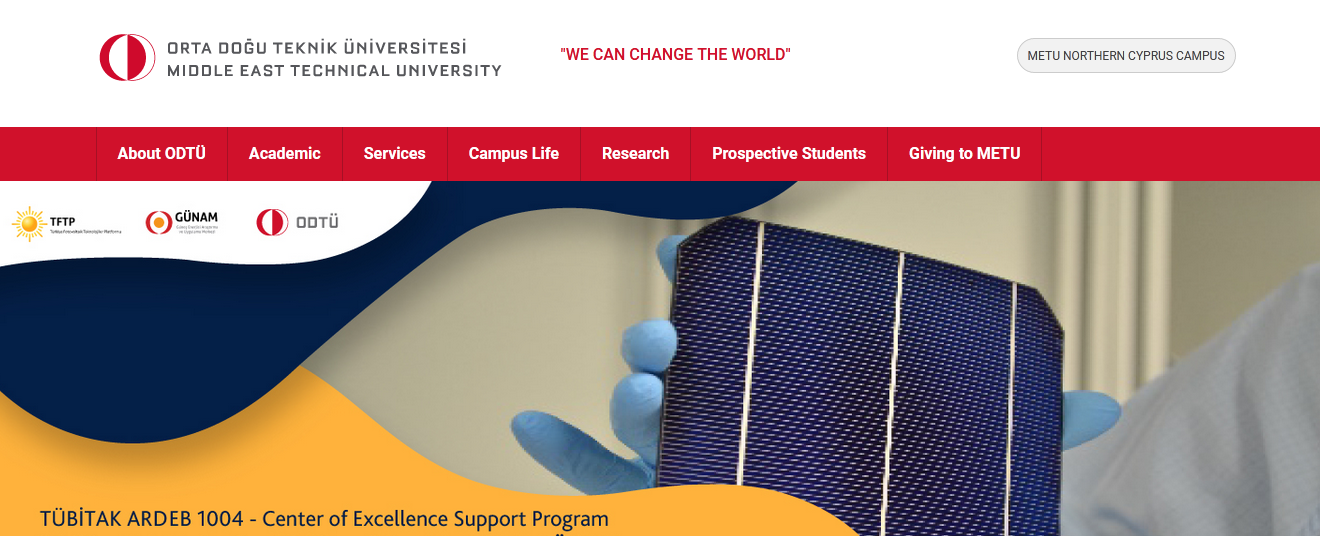
Founded in 1956, the Middle East Technical University (METU), based in Turkey, specialises in the natural and social sciences. Its motto is: ‘Science is the truest guide in life.’
Architecture was the first academic programme to be taught at the university, which now offers 43 undergraduate, 107 post-graduate and 69 doctorate programmes to around 30,000 students.
METU is organised across five faculties – Architecture, Engineering, Administrative Sciences, Arts and Sciences, Education – and separate graduate schools of Natural Sciences, Social Sciences, Informatics, Applied Mathematics, and Marine Sciences.
Originally based within two small buildings, METU gradually grew in size. In 1963 it relocated to its current site in Ankara, becoming the first university campus in the country.
Today, METU is an internationally-focused institution, boasting more income from international research projects than any other Turkish university, with partnerships in place with such leading global organisations as NASA, NATO, the United Nations, the World Bank and Erasmus.
All METU’s degree programmes are taught in English and the university is home to over 1,700 international students from almost 100 different countries.
In 2003 it opened an international campus in Northern Cyprus – the first overseas campus of a Turkish university.
Its main campus in Ankara is situated within 11,000 acres of land designed to resemble a forest, complete with a lake – Lake Eymir – which a focal point for students’ recreational activities. While its Erdemli campus, situated on the Mediterranean coast, is the site of META’s Graduate School of Marine Sciences.
Other METU facilities include Turkey’s first science and research development park. Known as METU Technopolis and located on its main campus, the park aims to act as a hub for high-tech start-ups.
Atılım University promotes internationalization both in education and in campus life with a multinational environment and participative approach. It offers exchange, internship and international mobility programs in EU countries and other parts of the world. International students are from over 63 different countries all over the world including Europe, North America, Africa, Asia, the Middle East, the Balkans, the Gulf Region and the Caucasus. The University employs internationally experienced and renowned staff. In most of the academic programs, the medium of instruction is English.
Istanbul University can trace its origins back to 1453, when it was founded by the Ottoman Sultan Mehmed II as a school of philosophy, medicine, law and letters. It has gone through many iterations since then, serving as a madrasah (Ismalic theological school) and as an institution of higher education called the Darülfünûn (House of Sciences) in the 19th century, before being established as Istanbul University in 1933 after Mustafa Kemal Atatürk reformed Turkey’s education system.
Today it has 22 faculties – including the Faculty of Law, the Faculty of Dentistry, the Faculty of Engineering and the Faculty of Fisheries – as well as three departments, eight schools, 16 institutes, 61 application and research centres – including a technology transfer centre – and the state conservatory.
The university is spread across 12 campuses: Beyazıt-Central, Laleli-Vezneciler, Vefa, Horhor, Avcılar, Çapa, Cerrahpaşa, Şişli, Kadıköy, Bahçeköy, Bakırköy and Büyükçekmece. The main campus is at Beyazıt-Central, which houses the Faculty of Law, Faculty of Economy, Faculty of Political Science, Faculty of Communication and the Hasan Ali Yücel Faculty of Education. The campus is situated in the Old City, an area of historical and architectural significance on Istanbul’s peninsula. The university has more than 5,000 academic staff and 7,000 administrative staff, who educate and take care of more than 80,000 students.
The university’s mission is to “bring together East and West; the past and the future”. Notable almuni include the 11th Turkish president Abdullah Gül, Nobel Laureate in Chemistry Aziz Sancar and David Ben-Gurion, the first prime minister of Israel.
Follow us on Facebook, Twitter, LinkedIn.
Watch us Click here











